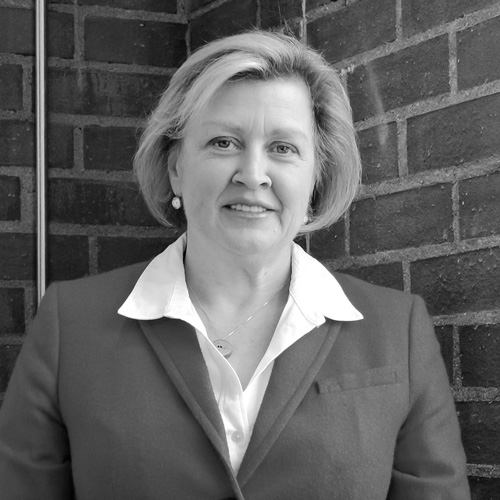As the medical solutions business within Nestlé Skin Health, Galderma sees well beyond simply providing solutions for skin problems. “Galderma is committed to delivering innovative medical solutions to meet the dermatological needs of people throughout their lifetime while serving healthcare professionals around the world,” says patent counsel Jessica Mikus. Product innovation, significant new launches, and steady geographic expansion are the three pillars of the company’s strong performance.
Galderma, founded in 1981 as a joint venture between Nestlé and L’Oréal, was fully acquired by Nestlé in 2014. With six manufacturing sites and a presence in more than one hundred countries, Galderma focuses on delivering prescription, consumer, aesthetic, and corrective medical solutions for skin health. The parent company, —based in Lausanne, Switzerland, with its North American headquarters in Fort Worth, Texas—has about four thousand employees throughout the world.
“Galderma is a research and development company at heart,” explains Mikus, who joined Galderma in 2015. She is one of six patent attorneys and the only one based in the United States, and she spends about two-thirds of her time in New York and the rest in Europe. She handles patent protection for new product development and throughout the life cycle of existing products, performs licensing and due diligence work, and collaborates with internal corporate counsel on patent litigation in North America.
But the project that she says will change the future of skin care is Nestlé Skin Health’s SHIELD, an acronym for Skin Health Investigation, Education, and Longevity Development. SHIELD is centralized around a global network of innovation and education that gathers creative and visionary thinkers from diverse disciplines, including dermatology, general medicine, aging, nursing, and technology. This network will provide an environment in which these professionals can explore creative partnerships, new concepts, and technologies to help preserve lifelong skin health. Nestlé Skin Health says that the initiative is a response to the expected rise in skin health needs. “The importance of skin health in the well-being of a rapidly growing, aging population has become more important in the context of healthcare and modern society,” Mikus says.
As part of its mission to advance skin health, SHIELD will open cutting-edge technology hubs, beginning with the flagship location in New York City. Mikus says SHIELD comprises two parts. “The first is inward-facing, to create open innovation and supplement internal research,” she says. “The second is outward-facing, as an incubator for the development of new ventures with collaborators from the outside.”
“We often leave ownership with the collaborators to maintain a sense of trust and entrepreneurship.”
To date, four external start-ups have joined the incubator. “They are digital health companies not necessarily focused on skin health,” Mikus says. “We are working together to collaborate on advancing skin health by finding new ways to drive innovation. In order to do so, we define skin health broadly and source ideas from unexpected sources and partners.”
The goal is to provide a community-based atmosphere that continually strives for new ideas. “We hope to inspire potential collaborators to participate in SHIELD community events, including Stammtisch roundtables, seminars, interactive initiatives, and partnership events,” Mikus says.
As an example, Mikus mentions the Skin Health Digital Collaboratory—a series of three SHIELD digital collaboration events, beginning with a kickoff meet-up to introduce skin health, followed by a digital design clinic, and ending with a hackathon. During the hackathon, participating teams will face a variety of challenges, including skin health literacy, nutrition and skin health, engaging acne, and skin health technology for the aging population. “At the hackathon, teams will develop and pitch their ideas to a panel of judges,” Mikus says. “The participating teams will have the opportunity to be selected for a year of development support in partnership with SHIELD.”
That sort of outreach is new for Galderma, which has been a fairly traditional pharmaceutical company to this point. “The idea was to innovate in ways that do not compete with our current internal research-and-development program,” she says. “The SHIELD flagship location gives us direct access to the digital health ecosystem in New York City. The hub is a showplace for healthcare professionals and entrepreneurs to immerse themselves in the most innovative technologies in skin health education, investigation, and discovery.”
Mikus’s role in SHIELD is similar to her responsibilities with internal research-and-development projects. She attends every event, project meeting, and collaboration in order to protect the company’s interests. This includes performing due diligence, such as looking for conflicts with other internal projects. “I am in a unique position in that I know of most projects within the company,” she says. “If something overlaps, I want to make sure there is internal collaboration and alignment with R&D,” she says. She also acts as a liaison with the legal team in Fort Worth for contractual and other business issues. Additionally, Mikus works closely with other patent attorneys in Europe to execute the company’s intellectual property strategy.
Defining return on investment for a project of this type is challenging, especially in its early stages. “At this point, we want to define ROI in terms of change, both internally and externally,” she says. “We look at how these projects make things smarter, better, and faster. If someone from the business unit says they are looking for a particular technology or solution, we see if we can do it cheaper, more flexibly, or faster by partnering externally. The flip side is that we are constantly sourcing ideas and going to the business units with solutions to existing problems or proposing new project ideas and collaborations.”
For Mikus, one challenge is maintaining this open and collaborative environment while protecting investments in Galderma’s intellectual property. To accomplish this, she ensures the companies Galderma works with are also protected. “We create an environment that is respectful to the rights of start-ups and collaborators,” she says. “Whenever someone comes to us with an idea, we make sure they are protected themselves. We often leave ownership with the collaborators to maintain a sense of trust and entrepreneurship. In return, we ask for right of first refusal. Our message is that we respect them as inventors and their IP, as well as our own.”

